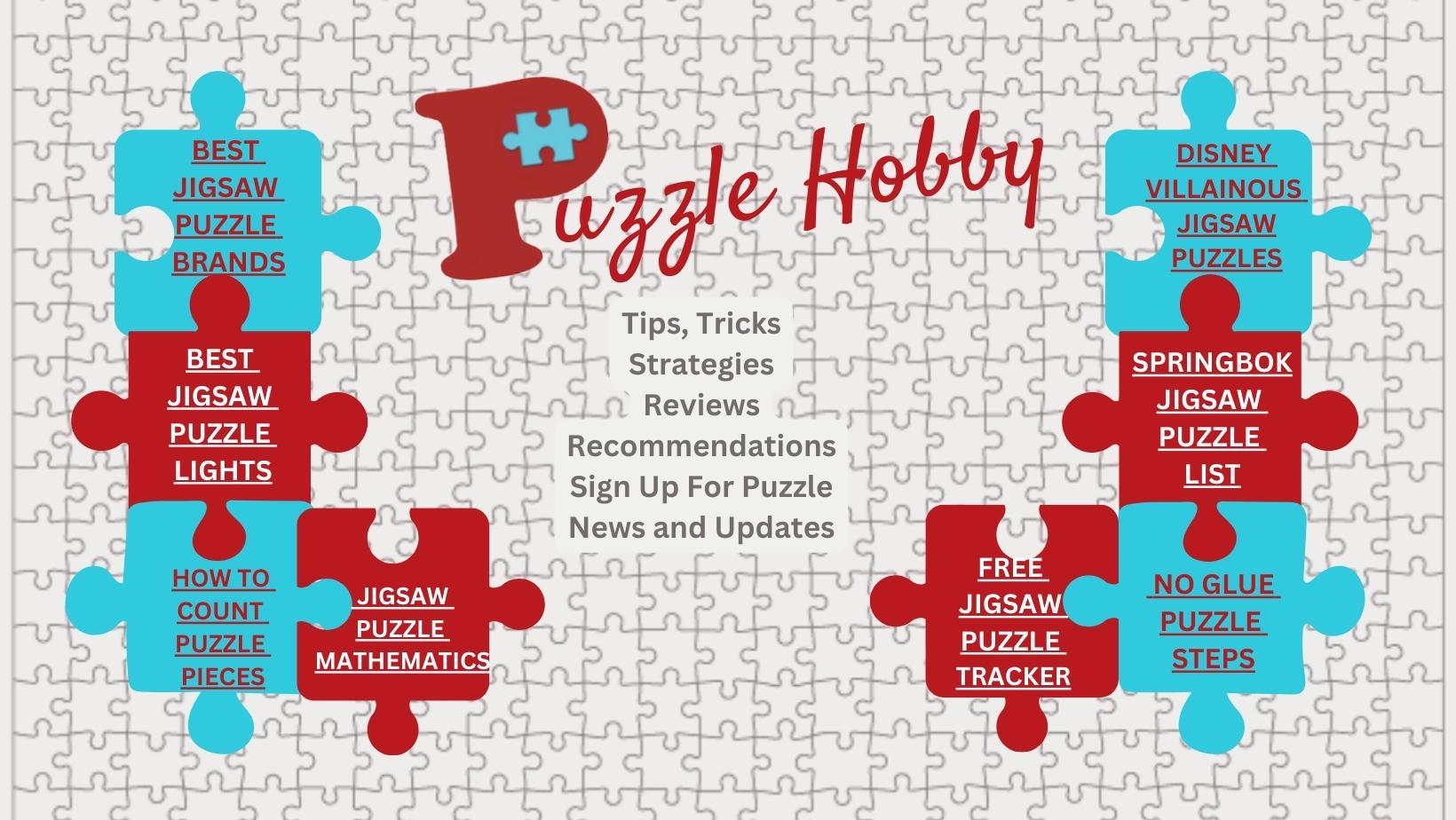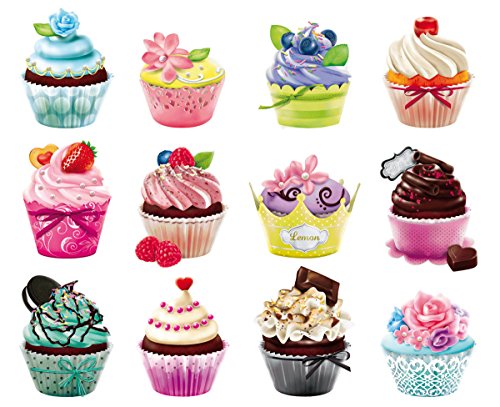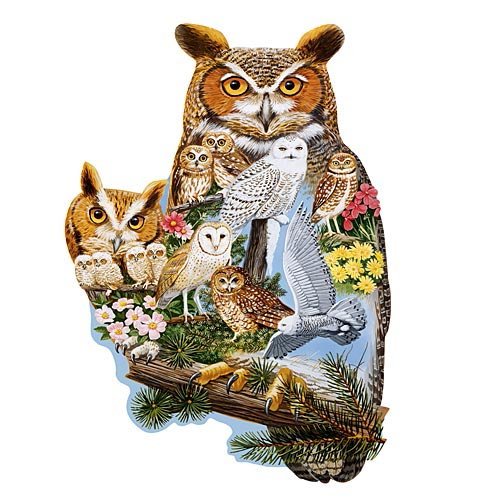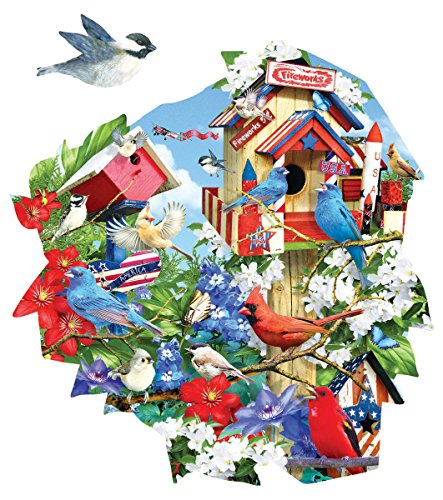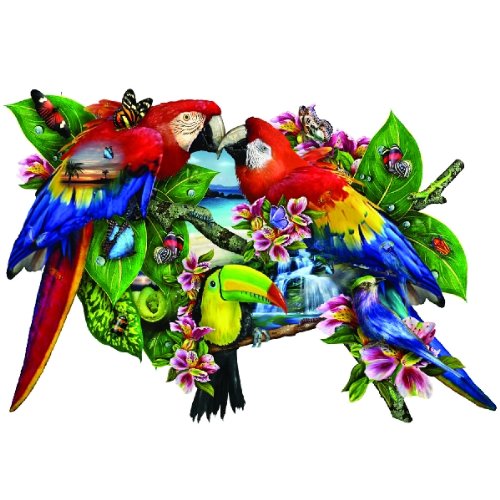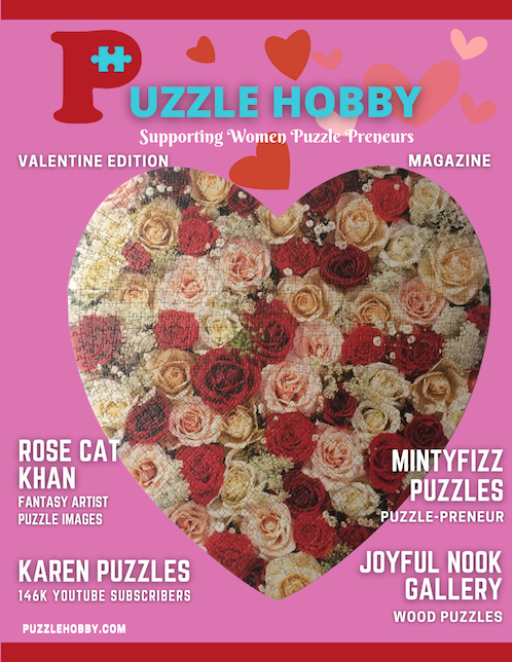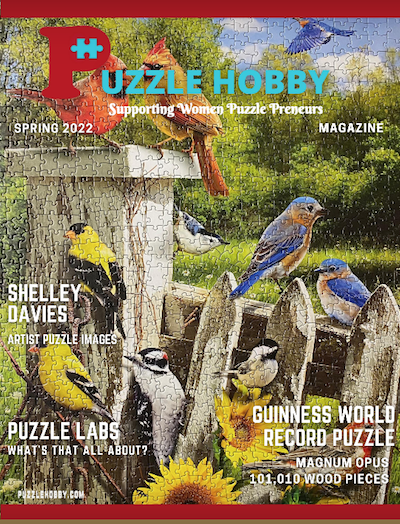 |
 |
- FAQ's 100 Questions
- Best Puzzle Brands
- Activities/Accessories
- Best Puzzle Lights
- Sponsored Reviews
- Sales l Giveaways
- Reap the Benefits
- Get Your Game On!
We are a participant in the Amazon Services LLC Associates Program, an affiliate advertising program designed to provide a means for us to earn fees by linking to Amazon.com and affiliated sites. Also, some of our posts contain other affiliate links and we will be compensated if you make a purchase after clicking on our links.


10 Types of Unusual and Unique Jigsaw Puzzles for Puzzle Lovers
Jigsaw puzzles are a timeless hobby that can provide hours of entertainment and relaxation.
While traditional puzzles with landscape or nature scenes are popular, there are also a wide variety of unusual and unique jigsaw puzzles available that offer a new and exciting challenge.
Top 10 of Unusual and Unique Jigsaw Puzzles You Need to Try
Brand: Wrebbit Puzz-3D, Title: Monopoly jigsaw puzzle game, Artist: Parker Brothers, Games/Wrebbit, Pieces: 755 foam cut, Size: various separate sections
- 3D Puzzles: These puzzles take traditional puzzles to the next level by allowing you to build a three-dimensional object, such as a famous building or landmark.
- Round Puzzles: Instead of the traditional square or rectangular shape, these puzzles are round and offer a unique challenge.
- Magnetic Puzzles: These puzzles use magnets to hold the pieces in place, making them perfect for traveling or for those who have difficulty keeping the pieces together.
- Puzzleballs: These spherical puzzles offer a unique challenge and can be used as decorations once completed.
- Double-Sided Puzzles: These puzzles have a different image on each side, doubling the challenge and offering a unique twist.
- Unconventional Designs: From abstract art to unusual shapes, these puzzles offer a unique and unconventional challenge.
- Hidden Image Puzzles: These puzzles have a hidden image or object within the puzzle, adding an extra layer of challenge and intrigue.
- Complicated Puzzles: With thousands of pieces and intricate designs, these puzzles offer the ultimate challenge for serious puzzle enthusiasts.
- Shaped Puzzles: These puzzles have pieces that are shaped like the image, adding an extra layer of challenge and creativity.
- Glow-in-the-Dark Puzzles: These puzzles add an extra element of fun by glowing in the dark once completed.
If you're looking for unique or unusual jigsaw puzzle designs, there are many to choose from. Some examples include puzzles with images of famous artwork, animals, maps, or even cartoon characters. Additionally, puzzles can be designed with unconventional shapes, such as a puzzle in the shape of a heart or a puzzle with pieces that fit together in a spiral.
There are also several variations of jigsaw puzzles. Some of these include wooden puzzles, foam puzzles, and plastic puzzles. Each of these variations offers a unique feel and texture, making them a great option for puzzle enthusiasts looking for something different.
Hidden image jigsaw puzzles are a type of puzzle where a hidden object or image is concealed within the puzzle itself. These puzzles often have an additional challenge of finding the hidden object or image once the puzzle is completed.
One of the more complicated jigsaw puzzle is the "Disney Moments" puzzle from Ravensburger, with a whopping 40,320 pieces. This puzzle features scenes from various Disney movies and is designed for serious puzzle enthusiasts.
The following is 40 pieces of puzzle pieces that are actually creatures of the Artist, M.C. Escher.
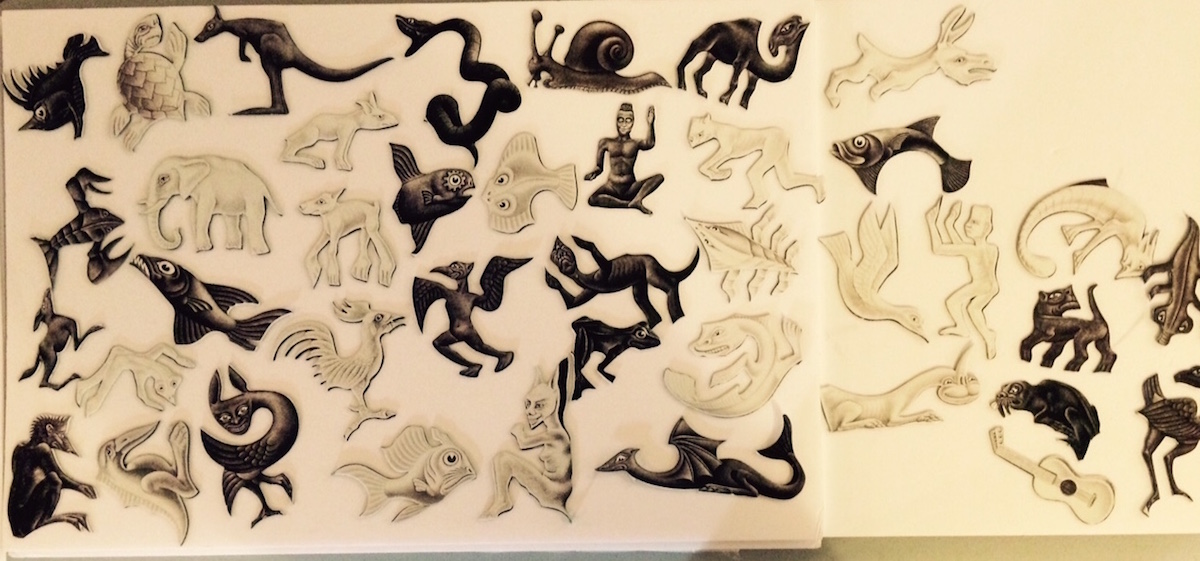
This is by far the most unusual and unique jigsaw puzzle that I have ever experienced. However it is by my favourite artist M.C. Escher and I have to five the creator a huge shout out for producing such a clever jigsaw puzzle!
While there are no specific patterns to jigsaw puzzles, there are some strategies that can help make putting together a puzzle easier. Sorting the pieces by color or shape, starting with the edges, and working on small sections at a time are all common strategies that can make the puzzle-solving process more efficient.
Puzzles with different shaped pieces are often referred to as "whimsy" puzzles or whimsies. These are often wood cut unusual shaped jigsaw puzzles.
So this is not a complete list of unusual and unique jigsaw puzzles by any means. There are SO many more ideas available out there IF you are looking for unconventional jigsaw puzzles. We certainly hope you find one or two that attract your eyes.
- Best Quality Jigsaw Puzzles
- 43 Best Jigsaw Puzzle Brands
- 5 Best Jigsaw Puzzle Lights
- 11 Best Jigsaw Puzzle Tables
- 23 Best Jigsaw Puzzle Mats
- 85 Best Shaped Jigsaw Puzzles
- 29 Disney Villainous Jigsaw Puzzles
- Best Jigsaw Puzzles Scoops
- Best Jigsaw Puzzle Glue
- No Glue Method for Puzzles
- 115 Cobble Hill Jigsaw Puzzles
- 33 JaCaRou Jigsaw Puzzles
- 9 WerkShoppe Jigsaw Puzzles
- 5 Grateful House Jigsaw Puzzles
- 95 Eurographics Jigsaw Puzzles
- 7 Hennessy Jigsaw Puzzles
- 11 Ceaco Jigsaw Puzzles
- 29 Cloudberries Jigsaw Puzzles
- 2 Wentworth Jigsaw Puzzles
- _______Advertisement_______
We have collected a massive list of jigsaw puzzles in numerous categories on our Amazon Store link. It's a quick way to browse most current puzzles and/or specific seasons, accessories and themes. Makes for a terrific one-stop jigsaw puzzle gift giving shopping centre. CLICK HERE
You may also like these different jigsaw puzzles...
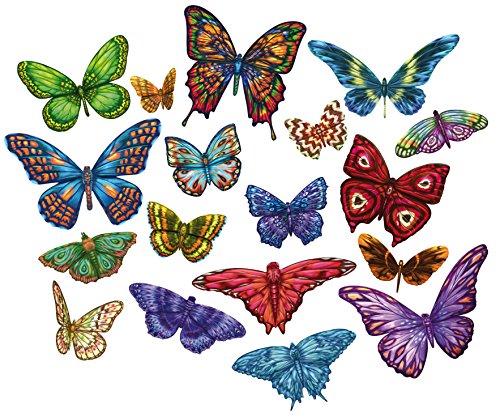 Butterflies 18 Mini Shaped Puzzles 500 Piece Total By Lafayette Puzzle Factory Butterflies 18 Mini Shaped Puzzles 500 Piece Total By Lafayette Puzzle Factory | ||
 Ravensburger Colin Thompson Shaped Lighthouse 955pc Jigsaw Puzzle Ravensburger Colin Thompson Shaped Lighthouse 955pc Jigsaw Puzzle | ||
 Ravensburger Lighthouse - Night Edition - 3D Puzzle (216-Piece) Ravensburger Lighthouse - Night Edition - 3D Puzzle (216-Piece) |
 Lighthouse Shaped Puzzle by Alan Giana 300 Pieces Lighthouse Shaped Puzzle by Alan Giana 300 Pieces |
About: Mastering the Art of Choosing the Right Jigsaw Puzzle
Tips to Avoid Buying Overwhelmingly Difficult Images
Jigsaw puzzles offer a delightful challenge, but there are times when the level of difficulty can be overwhelming. Whether you're a seasoned puzzler or a novice looking for an enjoyable experience, it's important to choose the right puzzle image that matches your skill level and personal preferences. In this article, we'll explore the world of difficult jigsaw puzzles and provide you with a list of tips to help you avoid buying images that might leave you feeling frustrated.
1. Know Your Skill Level
Understanding your own puzzle-solving skills is key when selecting a jigsaw puzzle. Be honest with yourself about your experience and comfort level. If you're a beginner, it's best to start with puzzles that have a lower piece count and simpler imagery. As you gain confidence and experience, you can gradually challenge yourself with more complex puzzles.
2. Consider the Piece Count
The number of puzzle pieces directly affects the difficulty level. Larger piece counts, such as 1,000 pieces or more, can be more time-consuming and mentally demanding. If you prefer a less challenging experience, opt for puzzles with smaller piece counts, such as 500 pieces or even fewer.
3. Analyze the Imagery
Before purchasing a puzzle, carefully examine the image. Complex and intricate designs, such as landscapes with numerous details or abstract patterns, tend to be more challenging. If you're looking for a less daunting puzzle, choose images with clearly defined sections, distinct colors, or simpler motifs.
4. Read Product Descriptions and Reviews
Take the time to read product descriptions and reviews. Puzzle manufacturers often provide information about the level of difficulty, which can help you make an informed decision. Additionally, reading reviews from other puzzlers can give you insights into the puzzle's complexity and whether it aligns with your preferences.
5. Look for Beginner-Friendly Collections
Many puzzle companies offer collections specifically designed for beginners. These collections often feature puzzles with larger pieces, simpler imagery, or even hints and guidance to assist you along the way. Exploring these beginner-friendly options can be a great way to ease into the world of jigsaw puzzles.
6. Seek Variety in Piece Shapes
Some puzzles feature unique piece shapes that can add an extra layer of difficulty. If you're looking for a more accessible experience, consider puzzles with standard grid-shaped pieces. However, if you enjoy a challenge, look for puzzles with irregular or whimsical piece shapes, as they can make the assembly process more complex and engaging.
7. Check for Puzzle-Specific Features
Certain puzzle manufacturers offer features to indicate the level of difficulty. For example, some puzzles may have a "difficulty rating" on the packaging or specify whether they are suitable for beginners, intermediate puzzlers, or advanced enthusiasts. These indicators can be valuable in making an informed decision.
8. Consider Collaborations with Artists
Many jigsaw puzzle companies collaborate with renowned artists, resulting in a wide range of puzzle images with varying levels of difficulty. Some artists may have a distinctive style that makes their puzzles more challenging, while others may focus on creating accessible and enjoyable designs. Research the artist's work and style to ensure it aligns with your preferences and skill level.
9. Seek Recommendations from Fellow Puzzlers
Engaging with the puzzle community, whether through online forums, social media groups, or local puzzle clubs, can provide valuable insights and recommendations. Experienced puzzlers can share their thoughts on specific puzzle images and brands, helping you make informed choices.
10. Trust Your Instincts
Ultimately, trust your instincts and choose puzzles that genuinely spark joy and interest for you. While it's important to consider the difficulty level, it's equally crucial to select images that you find visually appealing and personally satisfying. Enjoying the process of assembling a puzzle is just as important as the challenge itself.
By following these tips, you'll be better equipped to choose jigsaw puzzles that match your skill level and provide an enjoyable experience. Remember, puzzles should be a source of relaxation and fun, so don't be afraid to explore different options and challenge yourself while staying within your comfort zone. Happy puzzling!
(ChatGPT, personal communication, June 20, 2023)
